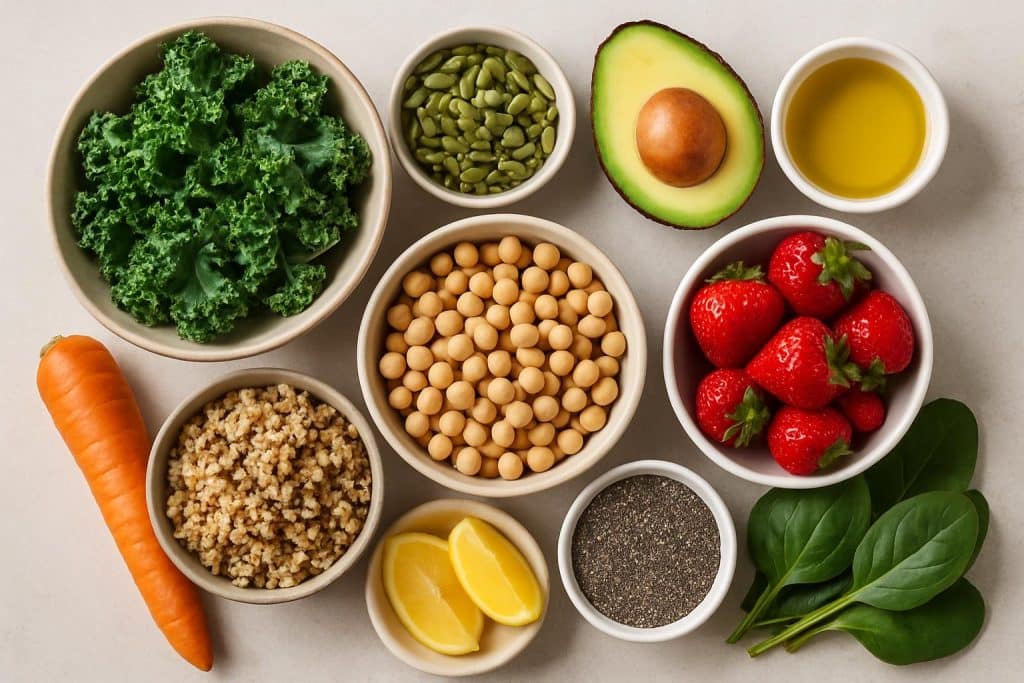Healthy eating starts with simple building blocks that make meals both nourishing and satisfying. Ingredients such as grains, legumes, nuts, seeds, and leafy greens provide balance and energy without overcomplicating the cooking process. Thoughtful seasoning adds depth, allowing everyday dishes to stay flavorful while still supporting long-term health.
Variety is what keeps routines fresh. Pairing familiar staples in new ways creates meals that feel lively, not restrictive. When wholesome ingredients become part of daily cooking, they form a foundation that offers comfort, consistency, and vitality—turning nutritious eating into a natural habit rather than a chore.
Spice Blends and Dry Rubs
Seasonings bring depth and energy to simple ingredients, turning ordinary meals into flavorful experiences. A mixture of garlic, coriander, oregano, and black pepper works especially well in dry rubs, locking in taste while avoiding excess salt or fat. Roasted vegetables such as carrots or zucchini take on a richer character with paprika and cumin, developing a caramelized finish that feels both hearty and bright.
Spices also mix easily into marinades and dips. Blending yogurt, lemon zest, and chili powder creates a coating that tenderizes proteins while keeping flavors balanced. Resting ingredients before cooking deepens the taste, making even basic recipes more memorable. Consistent use of simple blends helps food remain vibrant and satisfying across everyday meals.
Leafy Greens That Add Nutrition and Variety
Leafy greens enrich meals with vitamins, color, and freshness while keeping preparation simple. Spinach softens quickly when stirred into pasta or soup, bringing brightness without altering other flavors. Kale blends smoothly into fruit-based drinks, adding fiber that balances sweetness and increases fullness. Even small additions make meals more sustaining while remaining familiar and approachable.
Swiss chard sautéed with garlic and olive oil pairs beautifully with fish, chicken, or legumes. Briefly cooking stems before the leaves preserves structure and softens sharpness, while lemon at the finish sharpens flavor. Rotating varieties avoids repetition and helps plates stay engaging, proving how easily greens adapt across meals while keeping nutrition consistent and enjoyable.
Protein-Packed Legumes
Legumes supply affordable protein and heartiness that suit a wide range of meals. Lentils thicken soups and stews naturally, adding depth without relying on cream or starch. Chickpeas, when roasted with olive oil and cumin, become crunchy toppings that add interest to grain bowls or salads. With minimal effort, legumes shift from supportive additions to central components.
Black beans and kidney beans provide weight when paired with rice, avocado, lime, and corn. Rinsing canned versions followed by a brief simmer refreshes both texture and taste. Roasted chickpeas finished with paprika and citrus zest offer bright flavor with every bite, proving how straightforward preparation makes legumes satisfying, versatile, and consistently rewarding.
Wholesome Whole Grains
Whole grains add both nourishment and versatility, fitting seamlessly into a variety of meals. Farro provides a nutty texture that pairs well with roasted vegetables, while quinoa and brown rice serve as foundations for beans, fish, or greens. Cooking grains in lightly seasoned broth rather than water enhances their flavor, producing dishes that feel robust without extra effort.
Beyond savory plates, grains carry over into satisfying breakfasts. Stirred with milk, cinnamon, and fruit, leftovers become a hearty porridge that reheats quickly on busy mornings. Preparing larger portions in advance allows for easy storage, making it simple to assemble meals during the week. Their adaptability keeps eating patterns lively while providing lasting energy.
Nutrient-Dense Nuts and Seeds
Nuts and seeds add protein, texture, and healthy fats while fitting easily into everyday meals. Almonds or pumpkin seeds sprinkled on salads or roasted vegetables create crunch without overwhelming flavor. Cashews and sunflower seeds blend into creamy sauces that stay dairy-free while adapting well to dressings, dips, or pasta finishes. Adjusting consistency with broth or water broadens their uses further.
Chia and flax contribute fiber and omega-3s while supporting texture in yogurt, baked goods, or drinks. Ground flax mixes smoothly into batters, while chia thickens when left briefly in liquid, forming a pudding-like base suitable for storage. Even a single spoonful adds balance, helping meals remain satisfying, practical, and naturally nourishing.
Meals feel more rewarding when built with simple staples that balance nourishment and flavor. Spices create character, greens add freshness, legumes and grains provide substance, while nuts and seeds contribute texture and richness. Each element adapts easily across different meals, supporting steady routines without complication. Over time, thoughtful combinations encourage variety, making healthy cooking enjoyable rather than restrictive. With reliable building blocks in place, eating well becomes a sustainable practice that consistently supports both energy and satisfaction. Nutritious meals then feel less like an obligation and more like a daily source of comfort and vitality.
